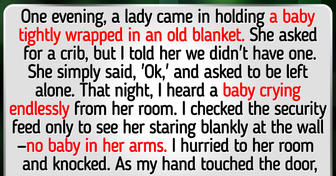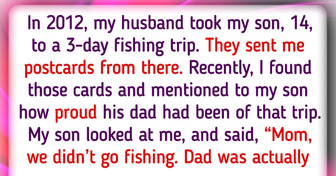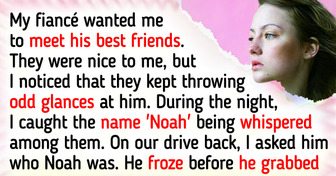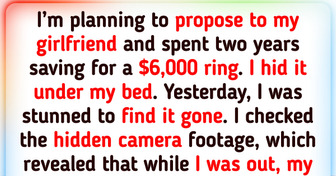The Wife of My Ex Forced My 16YO to Babysit Their Newborn at Night—So I Took Matters Into My Own Hands
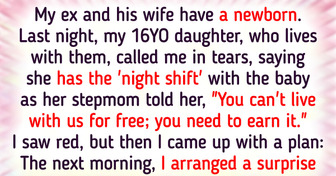
When we think of Mars, we often imagine a barren wasteland, a place devoid of life and color. Just a big, lonely, rusty rock hurtling through space. For a long time, scientists believed that Mars was indeed a “Red Planet”. You see, Mars has a special talent. When it’s far away from us, it appears as a tiny, twinkling red dot in the night sky, like a glowing ember in a sea of stars. But as it gets closer to Earth, it becomes more visible. So its reddish hue becomes more apparent. This phenomenon has captured the imaginations of people throughout history, leading to countless speculations and myths about the nature of Mars. Astronomers, of course, noticed it too. They believed that the color was due to vast deserts covered in iron oxide, or rust. That’s why we started calling Mars “the Red Planet.”
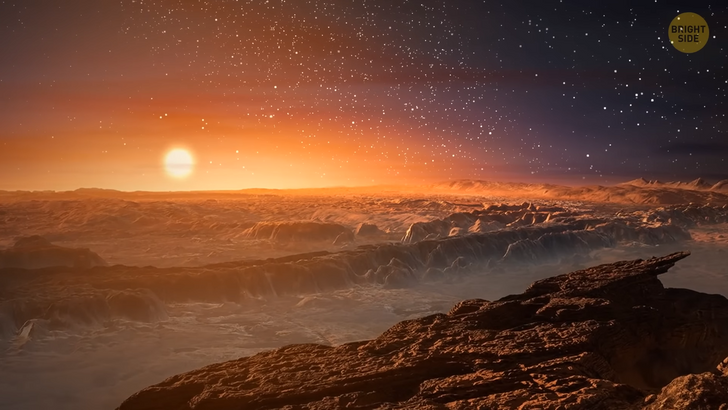
When the space age started, NASA and other space agencies started sending missions to Mars. Early orbiter images also showed Mars with a reddish hue. This idea was further popularized by countless movies, books, and TV shows. They all showed us this dramatic picture of Mars as a desolate, harsh world with nothing but endless deserts and towering red cliffs. However, as technology advanced, we started sending orbiters, landers and rovers on Mars. Spirit, Opportunity, and Curiosity and many others — they all are our interplanetary detectives. Orbiters as Mars’ all-seeing eyes in the sky. These spacecraft orbit around Mars and capture stunning images from high above. Like a cosmic paparazzi, they try to reveal all Mars’ hidden secrets.
But orbiters can only reveal so much. That’s where landers and rovers come in — Mars’ ground explorers. These robotic adventurers hang around on Martian highways and byways. They try their best to study Martian rocks, soils, and atmosphere. And thanks to them, we finally found out the truth. Turns out, Mars is a world of contrasts and a rich palette. Imagine standing on the surface of Mars. Instead of a sea of monotonous red sands, you’ll be greeted by a breathtaking tapestry of colors. As you look around, you might see sand dunes that resemble a scrumptious butterscotch dessert, with their warm, caramel hues stretching across the landscape. You come across valleys and plains that glisten with a golden glow, as if Mars has hidden nuggets of precious metal just beneath its surface, waiting to be discovered by intrepid space prospectors.
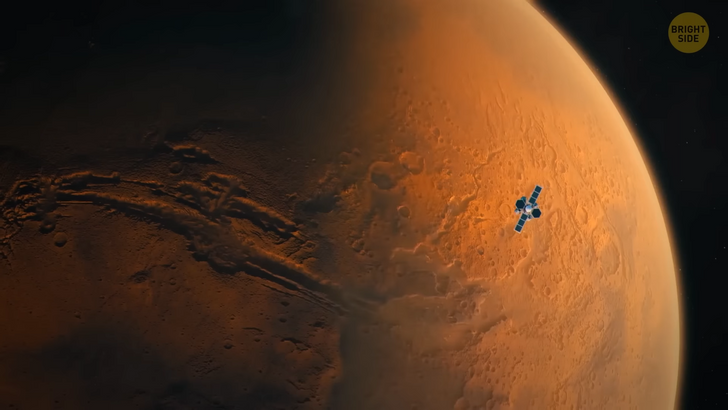
Moving on, you stumble upon areas with a brown and tan color palette that resembles a Martian safari, with shades reminiscent of the African savannah. All that’s missing is some unique Martian wildlife. And in some regions, you might even catch a glimpse of a slight greenish hue that adds a touch of mystery to the landscape. These green colors indicate the presence of minerals on the planet. All these colors reveal Mars’ exciting geologic history. They’re the results of various minerals and chemical compounds. There are things such as olivine, sulfates, and clays that create this visual feast for the eyes. And, by the way, our idea of Mars as a boring desert is also a myth! Actually, its landscapes are shaped by ancient river channels, volcanoes, impact craters, and shifting sands.
However, there’s also some... unpleasant addition to all these beauties. The thing is, humans have already managed to leave their mark on Mars, even though we haven’t even visited it yet. Yep. We’ve already turned the Red Planet into a celestial landfill. But, to be honest, it was inevitable. Imagine rovers and landers zipping across Mars, conducting scientific experiments. Of course they would leave behind a trail of debris. Discarded spacecraft parts, deflated airbags, and other leftovers... Now the planet isn’t really barren, is it? Well, at least it will become a treasure trove for archaeologists of the future. But it also serves as a cautionary tale. We need to remember to stay responsible during our space exploration. So, now we know that the real Mars is a vibrant world of surprises. But this isn’t the only cosmic body in the Solar system that turned out to be cooler than we thought!
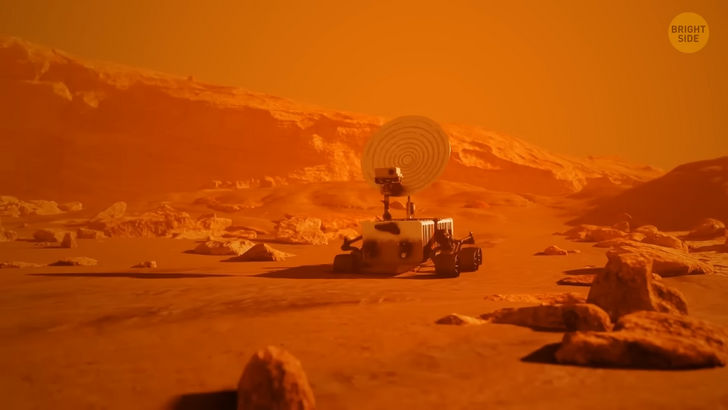
Remember Pluto? That guy who was once known as the ninth planet in our solar system? And now we consider it one of the dwarf planets. So, the latest research has revealed to us very interesting things about this fella! Pluto was often depicted as a tiny frozen world covered in ice, like a cosmic popsicle. But when the New Horizons spacecraft zoomed past Pluto in 2015, it revealed the true appearance of this planet. From a distance, Pluto appears to be a mix of reddish-brown and charcoal black, like it’s wearing a stylish outfit for a formal cosmic event. But as you get closer, you’d start to notice a breathtaking array of colors. Imagine standing on a frozen plain that glistens like a diamond, with patches of crimson red that look like they were painted by a Martian artist with a flair for drama. Nearby, you might spot patches of charcoal black, giving the landscape a moody and mysterious vibe.
As you continue your exploration, you might come across regions that are a stunning blend of orange, yellow, and white. And if that wasn’t enough, you might also encounter icy mountains that shimmer with a hint of blue, creating an otherworldly glow that would leave you awe-struck. Also, it turns out Pluto isn’t just a simple frozen ball, but a dynamic world with beautiful mountains! Pluto’s tallest mountain is called the Tenzing Montes, and it’s about 20,000 feet tall — almost as big as Everest. It’s like Pluto wanted to show off and prove it’s not just a runt in the planetary neighborhood. The dwarf planet’s surface is also dotted with vast icy plains that are as smooth as a skating rink. It’s like Pluto is inviting us to strap on our ice skates and glide across its frozen surface.
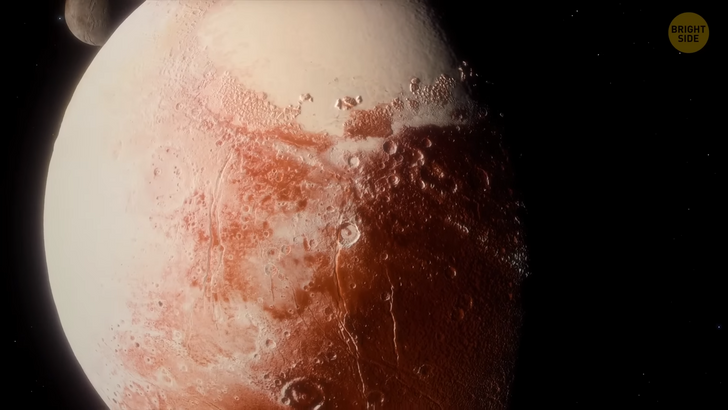
But the real kicker was when New Horizons discovered that Pluto has a heart — a heart-shaped region on its surface made of icy plains called Tombaugh Regio. Who knew this little planetary oddball could have so much love? Or let’s take Saturn’s moon Titan, for example. What we used to imagine about Titan was just the tip of the iceberg. This guy has also revealed itself to be a celestial wonderland. In the past, we thought Titan might be a barren and desolate moon, perhaps covered in a monotonous layer of rock and ice. But boy, were we wrong! Titan has turned out to be one of the most intriguing and diverse bodies in our solar system. First of all, forget about the dull grays and browns. Titan’s surface is actually draped in a thick haze that creates an ethereal orange glow, like a mystical mist that adds an otherworldly touch to the landscape.
Titan also has lakes, rivers, and even seas! But hold your horses, we’re not talking about water here. This moon is too cold for liquid water to exist in its frigid atmosphere. Instead, its lakes and seas are filled with liquid hydrocarbons, like ethane and methane, which act as the main “liquid” on this moon. Imagine standing on the shores of a lake, looking out at the liquid methane gently lapping against the rocky coastline, with a hazy orange sky above. It’s like a surreal blend of Earth and extraterrestrial worlds, all rolled into one.
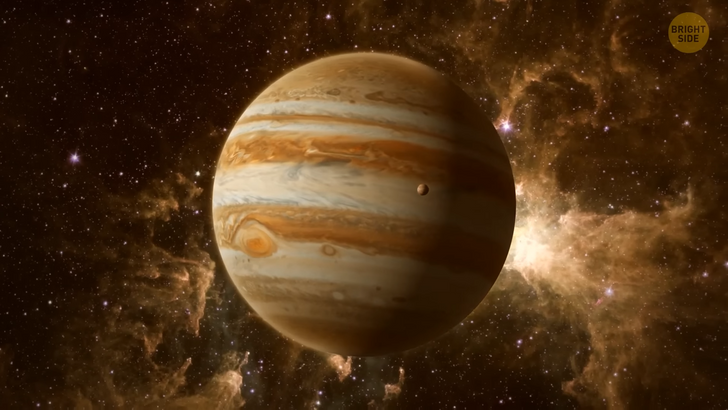
And finally, Jupiter, the largest planet in our solar system. It has often been depicted as a vibrant orange planet with swirling red and brown bands. However, in reality, Jupiter’s atmosphere isn’t orange. It’s rather dominated by shades of red, orange, brown, and white. NASA’s Juno mission has provided us with stunning images of this planet. In these photos, we can see cloud patterns, massive storms, and a complex system of belts on Jupiter. Turns out, it’s more breathtaking and diverse than we had imagined.
So, there you have it, space explorers! Seems like our imaginations can be way off when it comes to the breathtaking beauty and diversity of the cosmos. So, the next time you gaze up at the night sky and imagine what those distant worlds might look like, remember that reality can be even more astonishing than our wildest dreams!

